
In this issue
FEATURES
Reduce mould by managing ventilation, internal humidity and dust
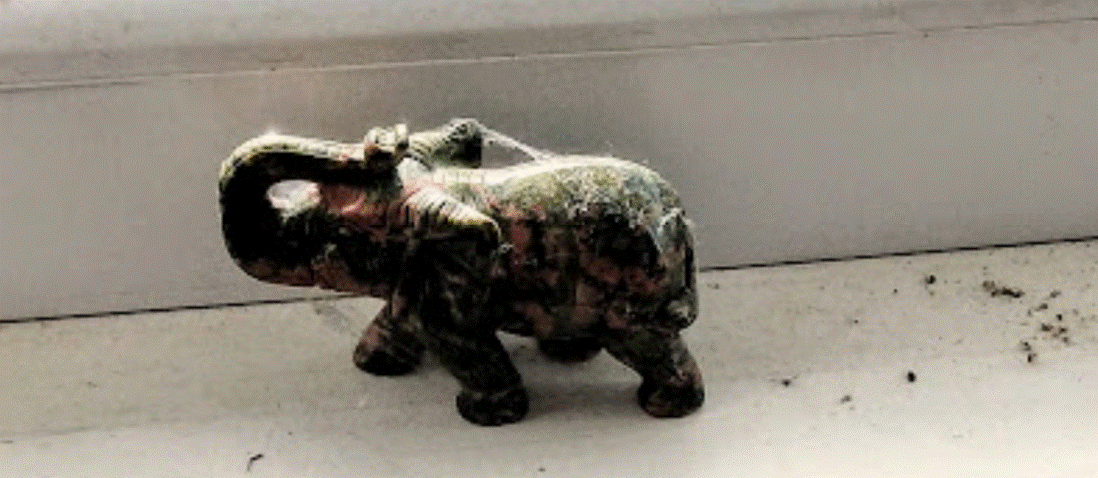
Healthy homes #3 by Mikala Dind
In part 3 of this series, Mikala Dind shares her knowledge about what makes houses healthy or unhealthy. This article explains the connection between mould and humidity, and how to discourage mould by managing ventilation, internal humidity and dust.
While these articles are designed with the new home builder in mind, the principles outlined can be used to assess/improve any existing home.
As I mentioned in the last article, there is a relationship between humidity, dust and mould. Mould, a type of fungus, is everywhere – as it should be. It is the great decomposer. Without mould every tree that has ever fallen down would still be on the ground, which would make life interesting.
Mould feeds on just about anything (wood, fabric, gyprock, even dust). However, what allows mould to grow is humidity. Without the right amount of humidity, mould goes into hibernation. Seeing as the presence of mould and the sources of food for it are everywhere, the main lever we have to manage the growth of mould is humidity. Relative humidity to be more precise.
Humidity
The relationship between humidity, temperature and condensation is a science subject in itself. Just ask any professional in the air conditioning industry. However, I just want to give you some broad brush stroke concepts that will help you maintain a healthy home environment.

As you can see from the graph above, once relative humidity gets to 60%, dust mites will really start to proliferate. If the relative humidity reaches 70% or above, then mould growth kicks in. The ideal range for internal humidity is 50-55%. (Below that, the air is too dry and can lead to dry eyes, scratchy throats and respiratory irritation).
How can you find out what the relative humidity is in your home? Just purchase a handful of relatively cheap hygrometers on-line (they only need to give you a rough guide). Put one outside, one in each occupied bedroom and one in each of the kitchen and lounge rooms (and any other room that gets used a lot, eg study). That way you will start to get a feel for how the humidity levels change throughout your home depending on the weather, the time of day/year, as well as what activities are occurring in each room.
I’ve mentioned in previous articles how the design of the home, and the site on which it sits, can lead to increased internal humidity. However, there are also many sources of humidity within the home, such as boiling water in a kettle, cooking on the stovetop, using a dryer, drying clothes inside on a clothes rack and so on. One of the biggest sources is the shower/bath, so it is essential to use a good exhaust fan (which should run for around half an hour after a shower unless you can open a window) and keep the bathroom door shut.
Of course, that’s not to forget that any water damage to the building (eg from a leaking water pipe) is not only a major source of increased humidity, but also a guaranteed cause of mould growth – particularly the more toxic varieties (eg Stachybotrys, Aspergillus).
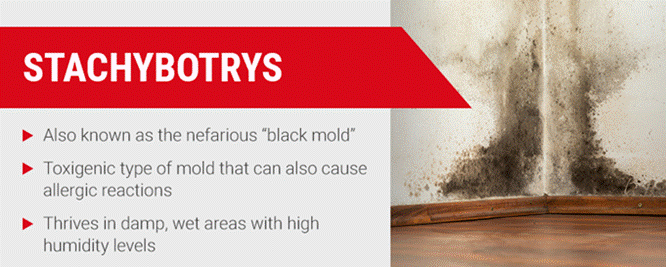
So, given the seemingly endless sources of humidity (from inside and outside the home), you may be wondering how on earth one can possibly maintain an optimal level of internal humidity. The easiest and cheapest way is simply through ventilation.
Ventilation

While it is often said that mould likes to grow in the dark, it’s is more accurate to say that, unless there is a high level of moisture (eg due to a leak), mould will grow wherever there is no air movement (eg behind a bedhead or couch against a wall).
By keeping a window cracked open just a little at night, you allow the warm, moist air exhaled by the occupants of a bedroom to be vented out, rather than becoming trapped in the room (leading to mould growth on the ceiling or upper edges of walls).
While this is going off topic just a tad, cross ventilation (where air is brought in through one side of the house and escapes out the other side of the house) is vitally important for a healthy home as it allows for stale air to be replaced by fresh air. Besides mould spores, the air inside a home can contain numerous pollutants such as off-gassing toxins (eg from new carpet), carbon monoxide (eg from an unflued gas heater), and even excess carbon dioxide (if there are too many people in a room).
For this reason, ventilation, whether passive (opening a window) or mechanical (eg ducted ventilation) is essential even if the external humidity is high (eg it’s raining). You still need fresh air.
So, you may ask, how then do you get the relative humidity to 55% if you’ve just ventilated with air that has, for example, 70% humidity? Even with ducted ventilation (eg in a house completely sealed to manage internal temperature), it is still vitally important that you find a way to manage the internal humidity.
Dehumidification
Purchasing a dehumidifier will be one of the best investments you can make for your home. It is the easiest way to manage humidity levels.
A dehumidifier captures the moisture in the air and traps it in a tank that you either empty when full or have the unit plumbed into a drain. There are many good dehumidifiers on the market (some around $400). It is best to do a little research to find out whether a condensing or dessicant dehumidifier is best for your situation, as well as what size you will need for the area you want to manage.
Some air conditioners have a dehumidification mode. While a stand-alone unit (eg on the wall in the lounge room) will only be able to effectively dehumidify a limited area, a ducted unit can dehumidify the whole house (or zones).
Dust
As I mentioned earlier, mould feeds on dust, and so the better we manage the dust load in our home, the less food will be available for mould. Carpets are not only a dust-trap, but can also harbour dust mites, and so must be vacuumed regularly (and steam/dry cleaned every few years) to mitigate this potential. However, even floorboards need regular vacuuming or a wipe with a slightly damp cloth (as sweeping with a standard broom causes dust to swirl around in the air before settling back down on the floor – which is okay in the shed, but not in the house).
Clutter makes keeping surfaces dust-free difficult, so it is a good idea to minimise items on a surface so that regular cleaning is as easy as possible.
The next article will look at the internal air quality of a home and various ways this can be managed.
Today’s take-away tip – Off-gassing
If you’re looking at moving into a brand new home, remember that most new carpets, paints, cabinetry, flooring etc will off-gas for up to several years, and so rooms need to be well ventilated to ensure these gasses escape.
Community battery results: REEL talk
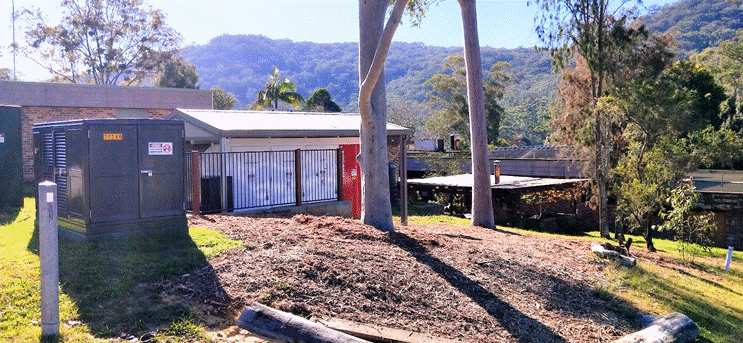
– Jon Ellis
Last year Narara Ecovillage achieved 88% self-sufficiency in electricity with the help of a community battery. In May, NEV Power’s Jon Ellis gave a REEL talk providing more details
As NEV Power co-leader, I recently spoke at a local event coordinated by the Central Coast Sustainability Association.
This was the third year the event, REEL (Relevant, Environmental, Economical, Local), has been held.
This year’s inspiration came after Rewiring Australia founder Saul Griffith’s 2022 REEL talk, where he outlined how communities like the Central Coast could make ‘The Big Switch’, with an estimated combined household savings of $850 million per year.
That raised the question: How much are businesses missing out on by not switching over to renewable energy? So this year’s talks focussed on exploring different investment opportunities for businesses, including:
- Manufacturers and developers who have implemented renewables
- Suppliers and users of community batteries
- Industrial energy generation and missed investment opportunities on commercial premises
My presentation focussed on the first year of operation of Narara Ecovillage’s community battery. The village currently has roughly 70 inhabited dwellings, along with associated infrastructure (street lights, water pumps, public buildings, a nursery and workshop areas, as well as the battery itself), and the energy source is rooftop solar. Most houses have more than 7 kW of solar power. Our smartgrid routinely exports over 1,000 kWh of power into the national grid.
Last year NEV Power installed our Hitachi ABB community battery which can store up to 437 kWh of our excess solar power. We use this to keep the houses powered at nighttime. This was the last major investment supported by our ARENA grant. The battery plus associated equipment cost the community about $700,000.
Overall, the battery has helped the community to become close to energy self sufficiency. In 2022 we were self-sufficient 88% of the time, with only 90 days across the year when the battery was not fully recharged during the day from excess household solar electricity.
The audience of mainly local Central Coast businesses were very interested to find out how they could invest in solar generation to reduce their own energy costs.
As well as Jon from NEV Power, the audience heard from Greg Gates from Sirron Holdings, who has converted his local business to 95% renewable energy, Caine King, a local architect who focusses on energy efficient buildings, Andrew Krumm, who consults to the energy industry and provided a very positive outlook on the level of investment in renewable energy in Australia, and Matt Polo from Janus Electric, who are launching some of the first electric heavy goods vehicles in Australia.
About REEL talks on the Central Coast
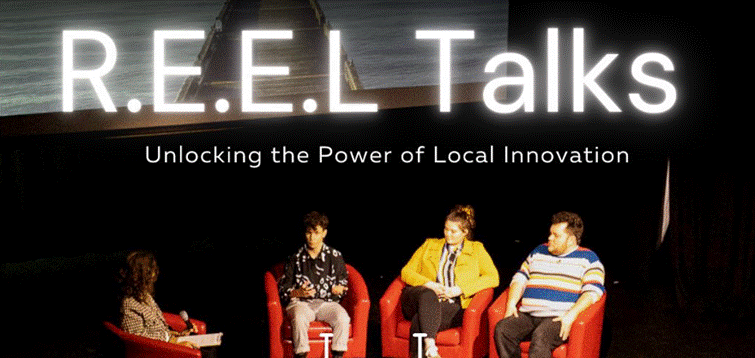
– from REEL
REEL Talks is all about recognising that we have the power in our hands to make the changes that some of our leaders are too scared or too comfortable to make. We bring in local inventors, entrepreneurs and ordinary people doing extraordinary things in their day-to-day lives that benefit not just their immediate lives, but the future of the people around them. The Central Coast Sustainability Association recognised the need to give a platform to these people to help everyone listen and be inspired by their stories, so that we can all make the changes that – as a collective – will make all the difference in the world.
The REEL Talks showcase speakers who are making a difference right here on the Central Coast, with continued and consistent passion for making the best choice they can for their environment and community every day.
The Forest Bathing experience & nature as ‘co-therapist’
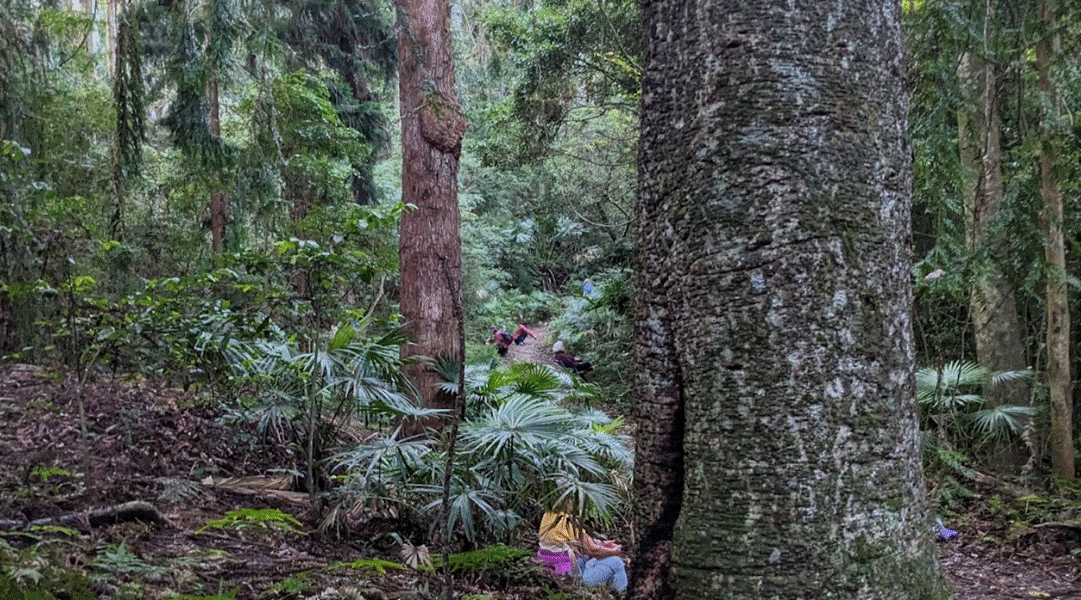
-Dr Carly Walker-Smith*
Carly recently led participants in the ecological self-practice of Forest Bathing. Eco-therapeutic practices such as Forest Bathing restore and reinforce our connection to nature, and Strickland Forest was the perfect venue. In this article, Carly gives some of the history of forest bathing, and a detailed description of the event, held at Narara Ecovillage.

The term ‘Shinrin-Yoku’, or ‘Forest bathing’ was coined in Japan in 1982 partially as a response to the corporate working culture and the need to slow down, reset and reconnect with nature. It was also a way the Japanese Minister for Agriculture sought to garner value from the forest and prevent logging. In the fascinating way of Japanese syllabaries, the characters for the word can be broken down into descriptions; the first character is composed of three trees and means ‘Forest’, the second character is two trees and refers to the interconnectedness of the forest and the third character denotes the luxury of being fully engulfed in the abundance that surrounds you.
Indigenous cultures world wide have of course lived with embedded reverence and intrinsic connection to nature for time immemorial, and it is only now that the evolutionary disconnect in which we live has led many of us to seek ways where there is no longer a sense of human-nature disconnect. Indeed, regaining our innate connection to nature brings us back to ourselves and can lead us to discover our ‘ecological-self’. Modern Western science is also generating a plethora of research pertaining to the therapeutic benefits of nature immersion and connection for physical and mental health in alignment with ancient wisdom.
On Saturday 22nd April, I facilitated a forest bathing experience for some Narara Ecovillage members as well as visitors. For some of the participants this was their first experience of this kind, whereas others had already explored different forms of nature immersion and connection work.
In our forest bathing experience into the Strickland State Forest we first took time to ‘land’: slow down and call ourselves present, facilitated by awareness of our breathing. We subsequently walked slowly and consciously into the forest in the beautiful Autumn afternoon glow, where participants were invited to imagine the forest as a ‘tapestry’ before them. What followed were uniquely individual experiences and interactions for each participant: some remaining stationary, seated or lying down on a mat, whereas others chose to wander where they felt intuitively led. We expressed gratitude to the forest as we left, and continued on to an art-based process seated round the fire circle on the Narara Ecovillage rural lot. Those who felt comfortable also shared their experiences, some of which were deep and profound – all left with a wonderful sense of calm.
Ecotherapy is the practical application of eco-psychology in which nature becomes the ‘co-therapist’, and aims to be holistic in theory and practice, to support individuals in dealing with physical and mental health challenges. More specifically Ecotherapy can be particularly supportive for individuals experiencing depression and anxiety, as well as in overcoming grief, navigating life transitions, trauma and for those who wish to engage in personal development. Healing and growth are fostered through interactions with nature. Ecotherapy encompasses numerous approaches including forest bathing, animal-assisted therapy, horticultural therapy, eco-art therapy, wilderness therapy, and green exercise, as well as more traditional talking therapy taken out of a clinical setting and out into natural settings such as a forest, garden or beach. More simply we can consider it to be ‘nature-based therapy’. Mindfulness based approaches are frequently incorporated into this work. Many people recognise that they feel more grounded and calm when they have spent time in nature. Nature can provide a place where people can feel safe and held.
*Dr Carly Walker-Smith has a background as a medical doctor specialising in psychiatry in London, UK. She is also trained in ecotherapy and soon to be qualified nutritionist.
3D Printing Sustainable Homes – Podcast

Ecoliving podcast #7 -Adam Weiss speaks to Alexander Tohidi
What if you could print a house from local materials instead of building one? That’s the goal of Alexander Tohidi, a University of New South Wales researcher who blends his skills as an electrical engineer, a computer scientist, and an architect to print buildings out of clay. Listen to the 18-minute podcast here:
Habitat Restoration and Bush Regeneration at Narara Ecovillage- Podcast
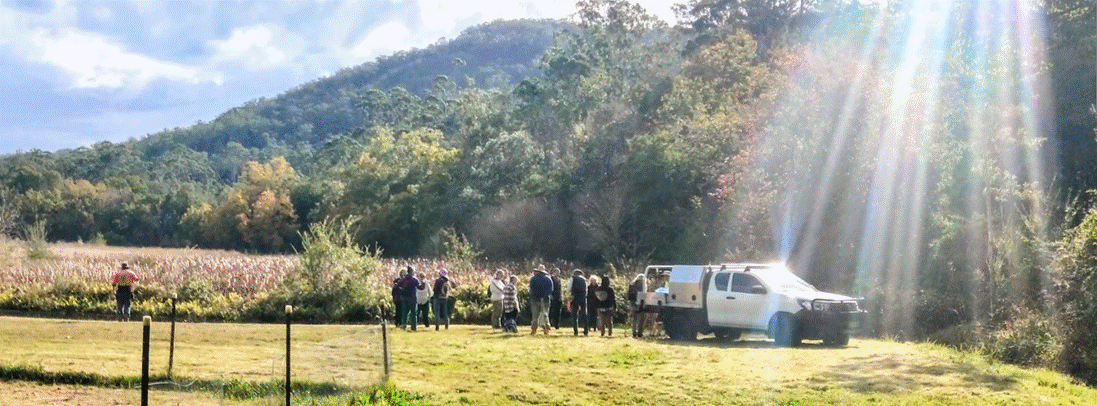
Ecoliving podcast #8 -Adam Weiss speaks to Teresa Farrell
Narara Ecovillagers have been doing habitat restoration and bush regeneration work for years, and we’re carrying out a grant-funded program to rehabilitate part of our floodplain to provide better support for Swift Parrots in their winter habitat.
Hear an overview of the ABCs of this kind of work in general, and about the Swift Project in particular.
Village News
Permablitz!

-Majella Lloyd
In a Permablitz! a group of permaculture practitioners and helpers come together to create a garden in a short period of time. Majella and Matt’s newly completed home at Narara Ecovillage recently benefited from the generosity of their neighbours.
We finally moved into our straw bale home in late February after many years of dreaming and planning. Our dreaming included the plants I wished to have in my little garden, and of course the plants sat in pots having their own dreams about entering the ground. Sadly, many sat in their pots for far longer than we had ever planned, and my olive and plum trees had even rooted themselves in my previous abode and had to reluctantly be left behind. However, the coffee, fig and avocado trees were up for the adventure.
A plan was hatched and Anzac Day was chosen to enact the dream. We were very fortunate to have a team of Permaculture veterans from the Ecovillage come to the rescue! The morning was set aside for the ladies to calculate the contours of the land and to see where the bunds and swales should sit, and the early afternoon set aside for the work. Thankfully, a team of additional volunteers answered the call to assist with the digging and creation of bunds and swales. Many of our ecovillage neighbours turned up to lend a hand; assisting in shifts. Some people helped for the whole day!
We hadn’t dared to hope that the plants would actually go into the ground on the same day, so when it happened, we were beyond delighted! What a fantastic community we live in! Our garden and family are forever grateful and I look forward to sharing the produce.
EVENTS
Thu 22 June: Storytelling Cafe at Narara Ecovillage

Stories and songs on the theme of The Land Down Under to inspire and delight—including musical treasures from the Village, and stories of bush survival. You’ll hear from village people—including Linda Scott and her Outback Cane Toad Muster, and from award-winning bush poet and our feature storyteller, Carole Heuchan.
- When: Thu 22 June, 6.30pm open for 7pm start
- Where: Narara Ecovillage Hall, 33 Gugandi Road Narara
- Cost: $15 pay at the door or $10 for Narara & NELN members
Sat 24 June: Narara Ecovillage Open Day
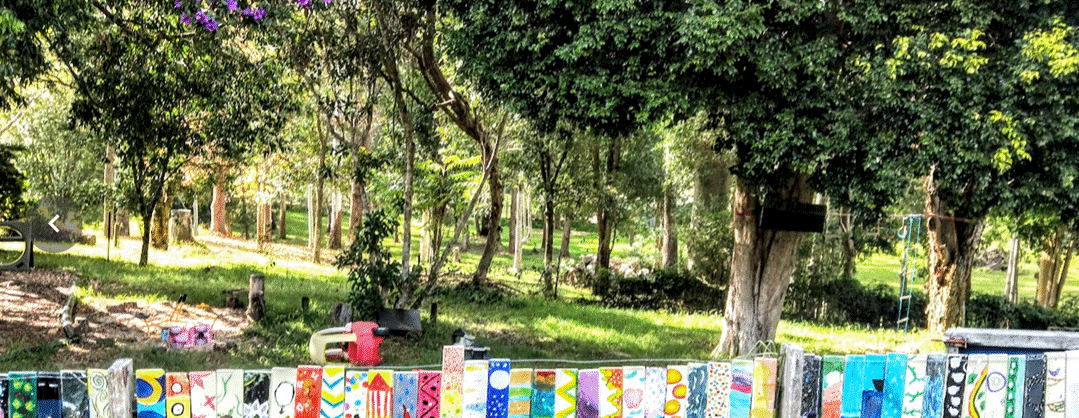
The Open Day (talk and tour) shows what Narara Ecovillage is all about, and demonstrates how we are activating a resilient community with ecological, social and economic potential by: shared food growing, natural retreats and Permaculture spaces; shared community and workplaces; highly efficient low-carbon homes now and in the next stage of building All welcome.
- When: Sun June 24, 10.30am – 1pm
- Where: Narara Ecovillage Hall, 33 Gugandi Road Narara
- Cost: $15 includes talk & walking tour around village, kids free!
- MoreDetails and Registration
If this is your first visit to Narara Ecovillage, you may find this interesting: the Open Day Preview introduces the ecovillage and its unfolding story.

From Sun 25 June, Interplay at Narara Ecovillage

InterPlay reconnects us with the gift of improvised play, incrementally and with ease. Simple, repetitive forms provide a structure to explore connection, movement, sound and words; opening to dance, story and song.
Come to one session or all of them. No experience necessary.
- When: Sundays: June 25, July 2, July 16, July 23, July 30, from 3-5pm
- Where: Narara Ecovillage Hall, 33 Gugandi Road Narara
- Cost: Free (gold coin donation for the use of hall)
- Contact: Maryla 0466 484 241
- More info: https://interplayaus.com.au/
Wed 12- Mon 17 July, European Ecovillage Gathering 2023

- What: European Ecovillage Gathering 2023 – a festival of ecovillages and regenerative culture held in a beautiful part of Germany. When: Wed 12- Mon 17 July 2023
- Where: Nature Community. Schönsee, Bavaria, Germany
- Cost: From €285 to €340
- More info & Registration: www.Ecovillagegathering.org
Please attend along with Nararians Lyndall & Dave Parris as we put our Aussie Narara Ecovillage on the map!
Fri 18- Sun 20 Aug: Experiential Deep Ecology Weekend Workshop

The Rainforest Information Centre presents DEEP ECOLOGY with John Seed, Carly Walker-Smith & Allison Tsao. We will challenge the illusion that humans are separate from the rest of the natural world.
- When: 4pm Fri 18- 4pm Sun 20 August
- Where: Narara Ecovillage, 33 Gugandi Road Narara
- Cost: $200 to $800 (incl all meals) NELN members 10% discount – click on “hidden tickets”; enter “NELN” in the code field.
- More info & Registration
25% of proceeds to rainforest conservation
Sat 26 Aug One-Day Festival of Health & Beauty at Narara Ecovillage

- What: Hear and experience contributions from 4 professionals – each with their views and ideas for working on the inside of our body, to be reflected on the outside: Adrian Adams (Naturpathy), Carly Walker-Smith (Ecotherapy, Nutritional Medicine), Maria Mackey (Wellness Medicine). Experience Forest Bathing
- When: Saturday 26 August, 8.30am-5pm
- Where: Where: Narara Ecovillage Hall, 33 Gugandi Road Narara
- Cost: $50
- More info & Registration here
All Welcome. Limited numbers, so don’t miss out on this exceptional event
What’s On at Narara Ecovillage – event calendar
Opportunities
Seeking Expressions of Interest from a farmer/market gardener to grow veggies at Narara Ecovillage

We are seeking a full-time farmer/market gardener to ramp up food production on our land and are exploring a Community Supported Agriculture (CSA) scheme, where a farmer feeds the people; the people support the farmer and farm, and share the inherent risks and bounty.
This is a great model for mutual benefit, support and sustainability. We all can get to eat beautiful, super fresh, very local, pesticide free produce and the farmer gets payment up front seasonally, so that s/he has funds to progress things on the farm.
If you know of someone who might be up to the task and interested in this opportunity, please ask them to contact lyndall@nararaecovillage.com so that we can send them further details.
Join the NEV Community Fire Unit

If you live close to Narara Ecovillage, you may be interested in joining the village Community Fire Unit (CFU). The CFU has over 4000 volunteer members in NSW and is an amazing organisation. If you’d like to play a key role in protecting this section of Narara, and enjoy team work and spraying massive hoses (serious but fun!) then consider joining our CFU team. You receive some pretty impressive PPE kit too to keep you safe.
What’s involved? Once you are trained we try to meet once a month for 1 hour over Summer to keep our skills fresh and improve our communication, so we are to be a well-oiled team as we make use of our Fire Trailer.
We usually have a BBQ or drinks afterwards too!
To join up you will need to complete 4 online learning modules (takes about 4 hours) and a live half day training … the next one is in Umina on August 20th and always books out well in advance, so sign up as soon as you can.
- Start the process: scroll down to the ‘Join the CFU program’ section of this page
- Village Contact: Mark O’Brien at yogimarkob@gmail.com
- About Community Fire Units (CFU)
Contact the Network News Editors neln.network.news@gmail.com

